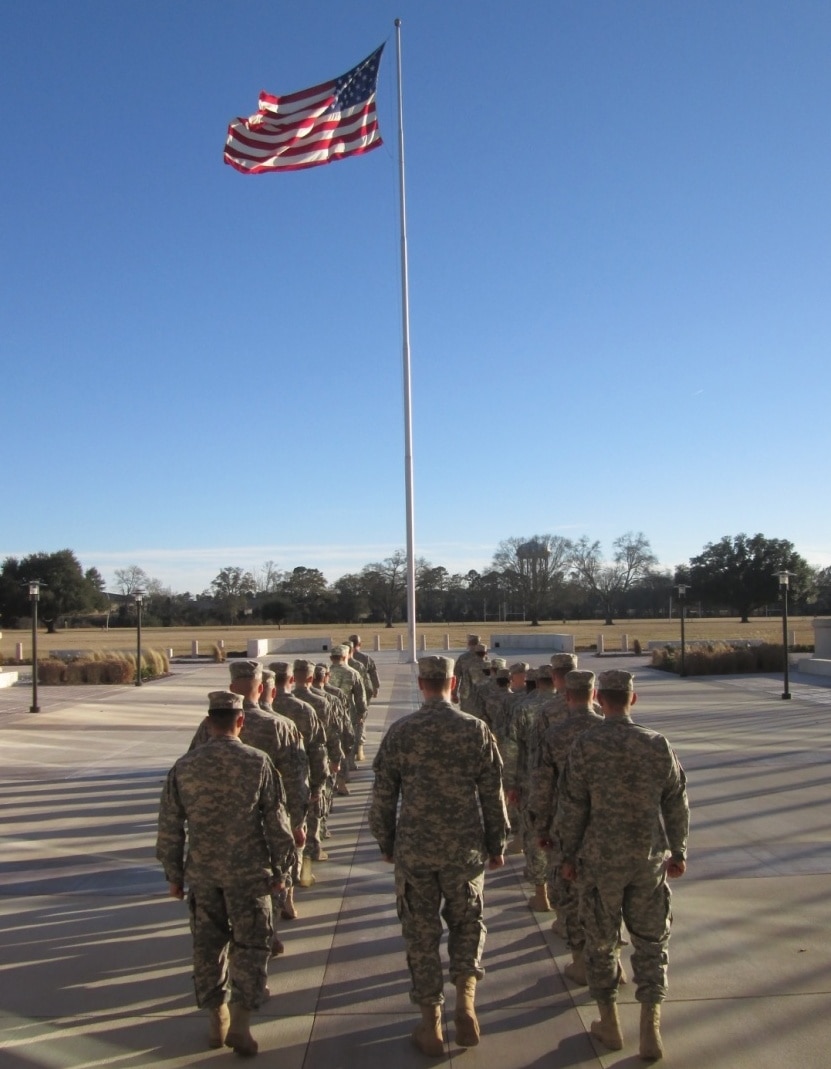The Army’s Officer Candidate School Alumni Association celebrated the 75th anniversary of OCS during its annual reunion this week in Columbus, Georgia.
Officer Candidate School was established in 1941 when the Secretary of the War Department — the original name of the Defense Department — and the Army chief of staff saw a need for a faster program to commission officers, according to a news release from the OCS Alumni Association.
That spring, the Selective Service Program had brought close to a million new soldiers to the Army, greatly increasing the need for officers. September marked the 75th anniversary of the graduation of the first OCS class.
Initially, OCS programs were created for individual branches in the Army. The first were the Infantry, Field Artillery and Coastal Artillery Officer Candidate Schools, established in a plan by Brig. Gen. Asa Singleton, commandant of the infantry school. Soon after the first officer candidates were commissioned, the War Department announced the program's expansion to 10 branch schools with an initial total enrollment of 2,300: infantry, signal corps, armor, artillery, coast artillery, quartermaster, medical corps, engineering, cavalry and ordnance.
The 12- to 13-week programs were some of the most intensive training the Army had to offer, leading to the OCS motto, "Standards, No Compromise."
During World War II, OCS became the leading source of new Army officers, with candidates commissioning as second lieutenants upon graduation. By the end of the war, the Army had 8.3 million soldiers. From 1941 to 1947, more than 100,000 were enrolled in 448 infantry OCS classes, according to the news release. Two out of three candidates would pass the rigors of these OCS classes, at a 67 percent commissioning rate.
Roughly 800,000 officers who served in World War II were OCS graduates.
After the war, all OCS training was transferred to the Army Ground General School at Fort Riley, Kansas, where it was later discontinued in 1950.
Infantry, artillery, signal, engineer, ordnance, and anti-aircraft OCS programs were reactivated for the Korean War in 1951. Infantry and artillery remained the only active OCS programs after that war.
The Army was expanded in 1965 as the conflict in Vietnam grew. It needed 40,000 to 50,000 new officers, but ROTC and West Point were producing less and less. Engineer, signal corps, armor, ordnance, quartermaster and transportation OCS programs were added.
In April 1973, the Branch Immaterial Officer Candidate Course was created at Fort Benning, Georgia. The Women’s Army Corps OCS remained at Fort McClellan, Alabama until merging with the Fort Benning program in 1976. Today, OCS is consolidated at Fort Benning under the Maneuver Center of Excellence.
In the decades since, Army OCS has reflected the needs of the country, expanding for the 1991 Gulf War, peacekeeping operations in the Balkans, the Iraq War and continuing operations in Afghanistan. In 1998, National Guard officer candidates began training with their active duty and Army Reserve counterparts at Fort. Benning.
Today, officer candidates entering the military for the first time attend basic training for 10 weeks at Fort Benning before beginning the 12-week OCS. Upon graduating, the newly commissioned officers do branch training at 16 different branch schools around the country.
Officer candidates are required to hold a bachelor’s degree, whether they have prior service experience or not. Applicants for OCS have to have scored much higher than their enlisted counterparts on the Armed Services Vocational Aptitude Battery.
Additionally, applicants have to score higher on the Army Physical Fitness Test than enlistees. Candidates must be between the ages of 19 and 32, accepting commission before their 34th birthday, according to GoArmy.com. They must also be eligible for a Secret security clearance, with some branches — such as military intelligence — requiring a higher level clearance.
The graduation rate from OCS was 84 percent for fiscal year 2015; it hit 90 percent in fiscal 2016. according to Lt. Col. Mark Andres, OCS battalion commander at Fort Benning, in an article published by the Army for the anniversary.
The Army’s Officer Candidate School has many well-known alumni, including former Senate Majority Leader Bob Dole, former Secretary of Defense Caspar Weinberger, retired general and commander of the 2003 invasion of Iraq Tommy Franks, former Arkansas Gov. Winthrop Rockefeller, Major Richard Winter — depicted in the HBO series "Band of Brothers" — and Arkansas Sen. Tom Cotton.





